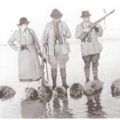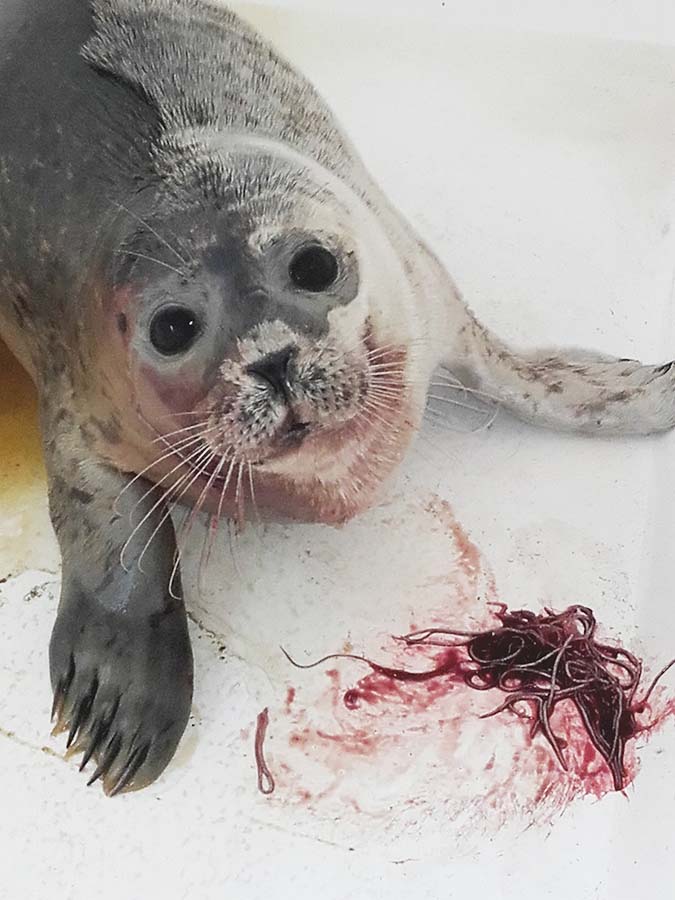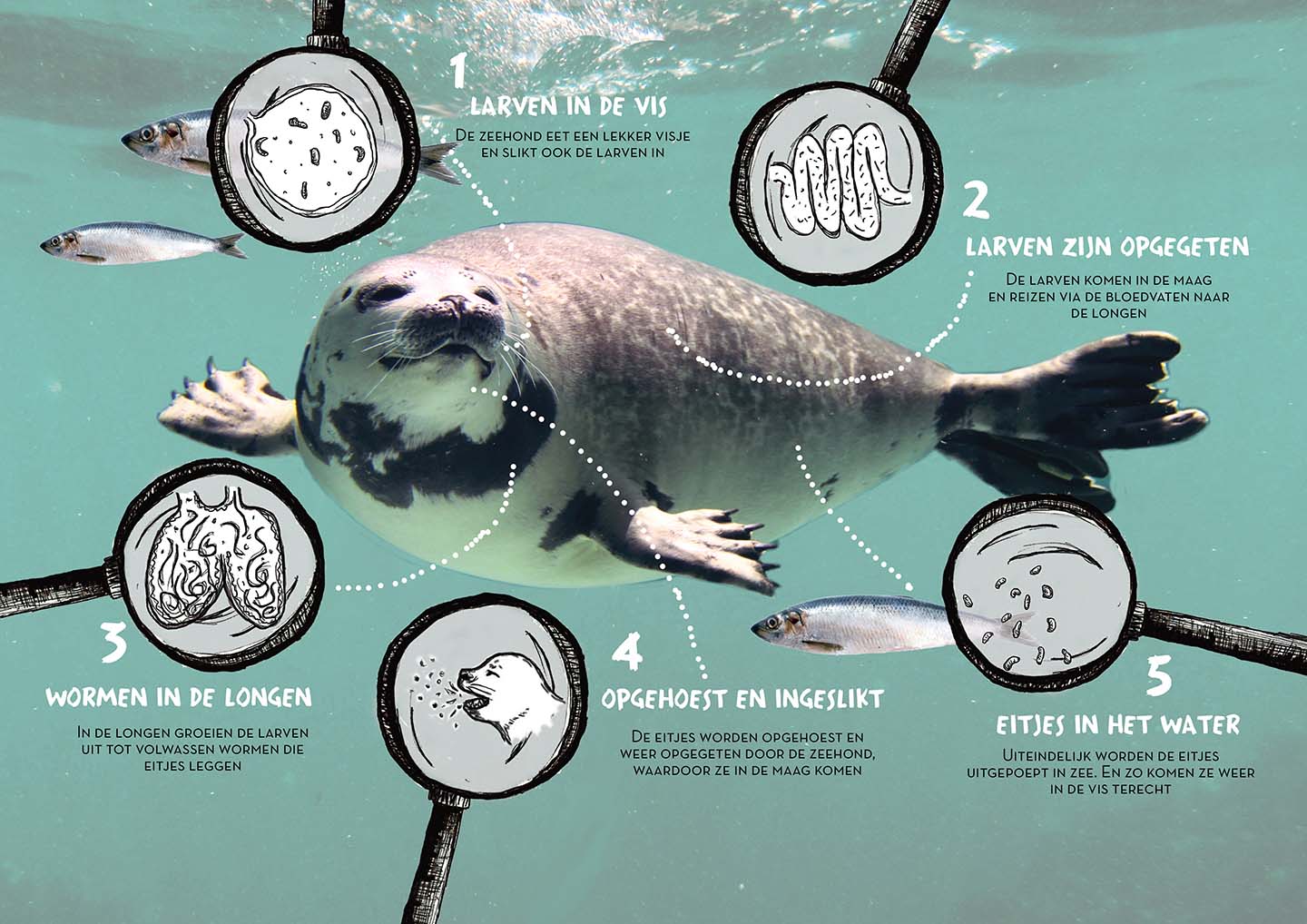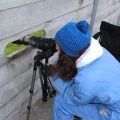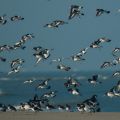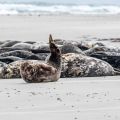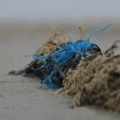Lungworms
In its first year of life, a seal is susceptible to infection by lung worms. After being weaned, young seals will go out and start hunting for prey by themselves. This is when they often contract lung worm infections. A number of them will get so sick, that they would not be able to survive without help.
See also
Lung worms are parasites that can severely damage the lungs – they eat the tissues in the lungs and reproduce there, causing more and more damage in the process.
The seal will experience shortness of breath and the damaged lungs are more susceptible to pneumonia or other bacterial infections. The shortness of breath also prevents a seal from staying under water long enough to hunt. This leads to starvation, weakness, and possibly death.
Seals are exposed to lung worm through the food they eat. For example, a fish might have been infested with lung worm when it was eaten by a seal. From the stomach, the lung worms will travel through the blood stream to the lungs, where they grow and produce larvae. Infected seals will start coughing, expelling the microscopic larvae from their lungs.
These larvae are then ingested by the seal, thus entering the host’s digestive tract. When the seal defecates, the larvae are released into the sea, where they can infect small sea creatures and grow. The infected sea creatures are eaten by seals, at which point the infection cycle restarts. If an infected animal is found on time, it can be treated. A seal with lung worm infection can be recognised by symptoms such as laboured breathing, a high back, and blood around the mouth from coughing.
Usually a seal with a lung worm infection will need to be rehabilitated for two to three months; once a seal has been cured, it will be resistant to this parasitic infection for the rest of its life.

On this page
-
Lungworms
